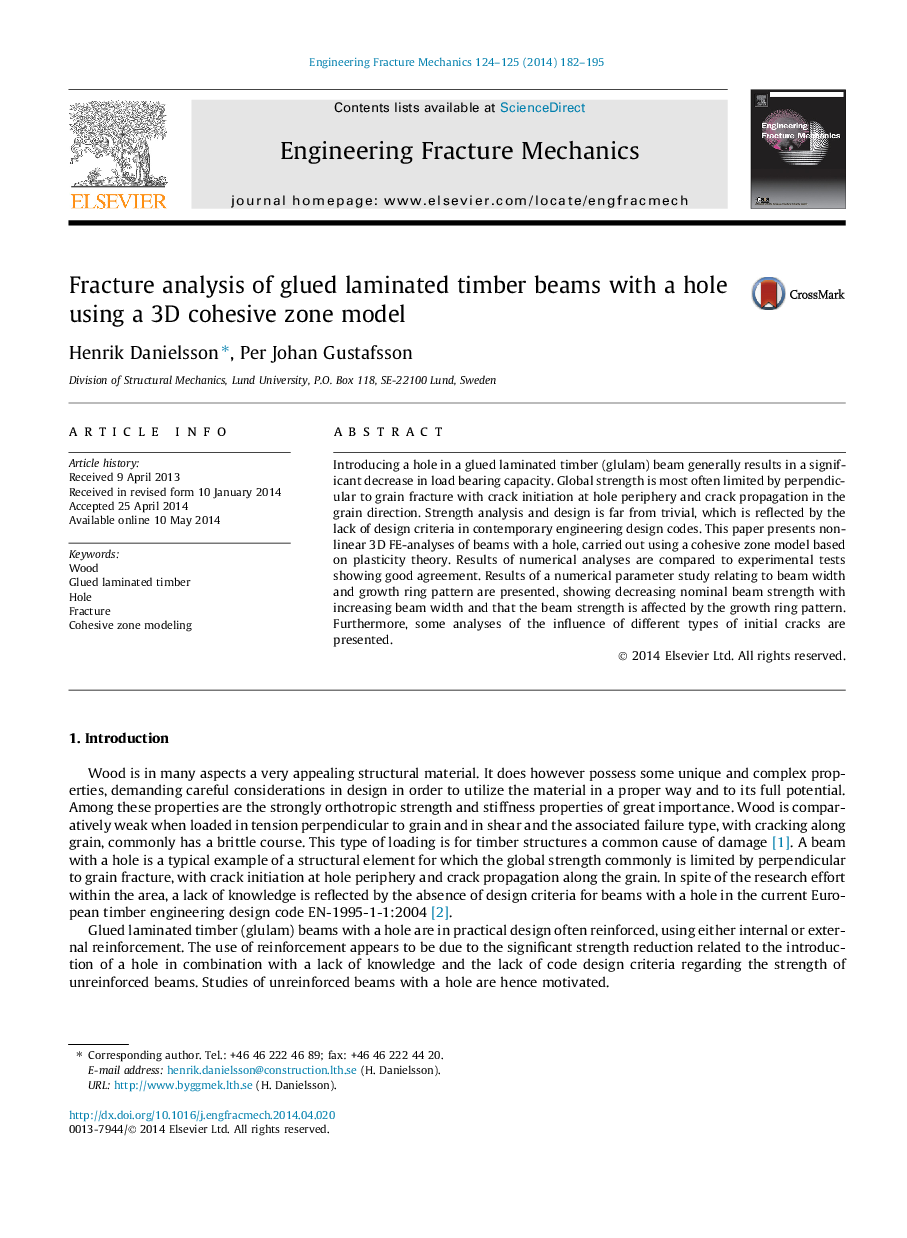| Article ID | Journal | Published Year | Pages | File Type |
|---|---|---|---|---|
| 766867 | Engineering Fracture Mechanics | 2014 | 14 Pages |
•Nonlinear 3D FE-analyses of glulam beams with a hole are presented.•A recent cohesive zone model based on theory of plasticity and the Tsai–Wu criterion is used.•The model appears accurate in predicting beam strength compared to experimental tests.•Beam width and growth ring pattern affect the calculated nominal strength.•Presence and extensions of initial cracks influence calculated beam strength.
Introducing a hole in a glued laminated timber (glulam) beam generally results in a significant decrease in load bearing capacity. Global strength is most often limited by perpendicular to grain fracture with crack initiation at hole periphery and crack propagation in the grain direction. Strength analysis and design is far from trivial, which is reflected by the lack of design criteria in contemporary engineering design codes. This paper presents nonlinear 3D FE-analyses of beams with a hole, carried out using a cohesive zone model based on plasticity theory. Results of numerical analyses are compared to experimental tests showing good agreement. Results of a numerical parameter study relating to beam width and growth ring pattern are presented, showing decreasing nominal beam strength with increasing beam width and that the beam strength is affected by the growth ring pattern. Furthermore, some analyses of the influence of different types of initial cracks are presented.
